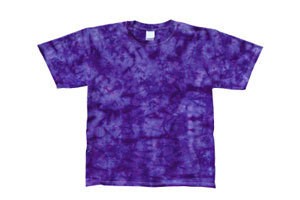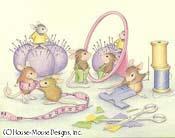Cheap alternative dyes from the ThriftyFun community.
Koolaid powder works great with animal fiber based clothing! There's tons of tutorials online about it. There's also been people who've dyed with Jello powder on craftster. Cotton and plant fibers need an acid dye, or somethng like RIT dyes. They're a little bit harder to do.
By Concetta
I have used cumin powder to dye things saffron yellow and tea works for a beige.
I am in a real 'dyeing' mode right now. I buy clothes and linens in the thrift store and dye them. Recently dyed a pretty sheer ruffled white top (plus bra and camisole) a very pale blue/green. It turned out great. Rit Dye is inexpensive here in the States, only a couple of bucks for a box/bottle. The bottle stuff is better, the powdered stuff in the box is hard to get dissolved and can leave darker spots where the undissolved powder touches the fabric. If you can only find the powdered kind in the color you want, prepare it by mixing it well into hot water, then filter it using a coffee filter.
By Claudia, MD
Think about the kind of things that stain clothes and you'll have some great ideas for dyes. Most of these suggestions are for cotton fabrics, most others are too hard to dye. One that works well is Freshie or Koolaid powder, unsweetened. Or beet juice (nice pink or purple), onion skins (golden yellow) All these dyes need what is called "fixing". After the fabric reaches the color you want, rinse it in warm water in which you have dissolved washing soda (also called borax), swishing the fabric though the rinse until color stops bleeding out of it.
By Mary Lou
One thing I can think of is to use food coloring with vinegar, much as we use to dye Easter eggs. You can also try Rit. Use the hottest water you have and rinse with cold water. Dry in dryer to set dye or if have no dryer, hang to dry, then set color with iron. Use bleach and run washer through an empty cycle with laundry detergent immediately after use of dye.
Also, if the fabric is cotton, a strong coffee or tea can be used to make it look old or to give it a tan or brown look, mix the tea or coffee in water and soak item until desired color is reached. Also try any berry jucie, or even grape juice with vinegar to set.
By martha pitts
Post your own tips below.

Add your voice! Click below to answer. ThriftyFun is powered by your wisdom!
I remember my mother using a cold water rinse with salt. She said it would "set the dye". She did this with all the red garments she bought me and the fabrics before she sewed them. In those days not all fabrics were color fast and would fade on a person's undies if caught out in the rain or if you perspired too heavily. Precautions had to be taken and salt was what worked for my mama.
Yes I agree with MartyD, it would best if u set the dyes with something called a mordent. Salt, washing soda and also, believe it or not, rusty nails!

Everyone is forgetting the fun stuff, like cooking onion skins (nice golden yellow), beets for a purplish blue and fleshy green leaves(a soft clouded green)You have to pound these last and put the fabric in without adding too much water.
Aurorasilk.com is a natural dye supplier in Portland, Oregon.
The owner Cheryl Kolander has wonderful tutorials on the
web. I worked for her for a year and answered email, etc.
Natural dying is so much fun...
There are also great tutorials on the web.
I found an alternative source for alum is Oriental food
stores. It comes in chunks which have to be dissolved of
course. Where alum is the appropriate mordant use 10-25%
by weight to dry textile. If you are just experimenting,
start low and work your way up and save your samples.
Alum is THE mordant for wool.
I am trying to dye some curtains white. They were originally an off white. Respond at sandyholy6 AT aol.com
Add your voice! Click below to answer. ThriftyFun is powered by your wisdom!